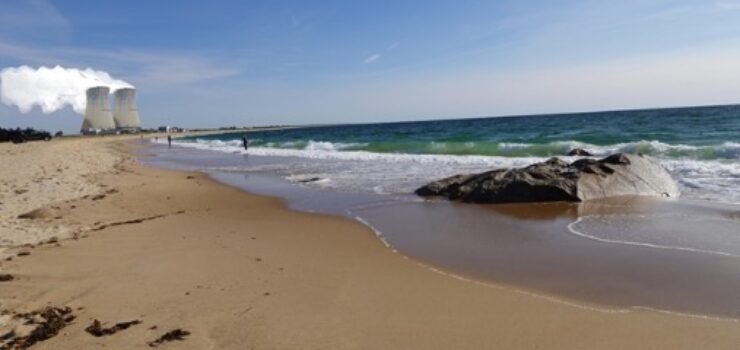The History Of Nuclear Energy And Ninigret Park
When: Wednesday, July 28 at 7 PM
Where: The Quonnie Grange, 5662 Post Rd, (Rt. 1) between East and West Beach Rd., next to Dunn’s Corners Fire Station (location map of the Quonnie Grange at bottom of post)
Why: Learn how the Charlestown Naval Airbase almost became a nuclear power plant and the environmental impacts of nuclear energy
Who: The Quonochontaug Historical Society offers this free presentation (donations welcome)
Presenter: Art Ganz, Marine Biologist
Attend this Quonochontaug Historical Society presentation at the Quonnie Grange to learn about the Nuclear power plants that were almost built in Charlestown in the 1970’s.
Short history below is from the Energy Chapter of Charlestown’s 2021 Comprehensive Plan, not from Mr. Ganz’s presentation.
In 1973 the US Navy announced that the Charlestown Naval Auxiliary Landing Field, a WW II-era naval training base lying along the shores of Ninigret Pond, was excess to their needs. The US General Services Administration then initiated the process of disposing of the property. In response, the New England Power Company (now a subsidiary of National Grid) pursued acquisition of the base as the site to build two 1,150 megawatt nuclear power plants. The company planned to cool the power plants with water from Block Island Sound.
After nearly six years of studies, passionate debate and litigation, the power plant proposal was dropped in favor of transferring the land to the Town of Charlestown and the US Fish and Wildlife Service (by way of the US Department of Interior). These irreplaceable public lands are now the 230 acre Ninigret Park and the 380 acre Ninigret National Wildlife Refuge Salt Pond Unit.
Charlestown’s opposition was the first successful campaign in the United States to halt the construction of a nuclear power plant. The years of environmental study to oppose the plants also launched a movement to preserve the coastal ponds.
Nuclear power seems highly unlikely to be proposed again for coastal Charlestown as the land and ponds are now protected as federal, state and local parks and refuges. But the memory and details of this history should not be lost. Programs, such as this presentation at the Quonnie Grange help to maintain a history of the nuclear power proposal.
History is more likely to be repeated if it is allowed to be forgotten.
All this summer’s programs by the Quonochontaug Historical Society are video recorded and will be available on YouTube after the program. If you are not able to attend for any reason, you can watch the program from the comfort of your home at a later date at Past Programs and Events.
Location map of the Quonnie Grange (5662 Post Rd, (Rt. 1) between East and West Beach Rd.) below:
Banner image from the Quonochontaug Historical Society

December 13, 2022 @ 12:54 pm
Thank you for remembering this battle to keep nuclear power plants out of Charlestown.
At the public commentary, I presented the GSA with a list of 200+ Galilee, RI fishermen signatures, gathered by Vicky White of Narragansett, and voiced our objections in protest of this plan. The commentary meeting started at 7:30PM, I think, and I could not speak until about midnight as Narragansett Electric paraded shill after shill of outsiders voicing favor for the plan. The GSA listened most intently to our presentation and, in the end, decided favorably against this nightmare. There was mention of placing the cooling towers at the vicinity of the Breachway!